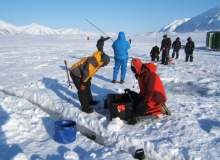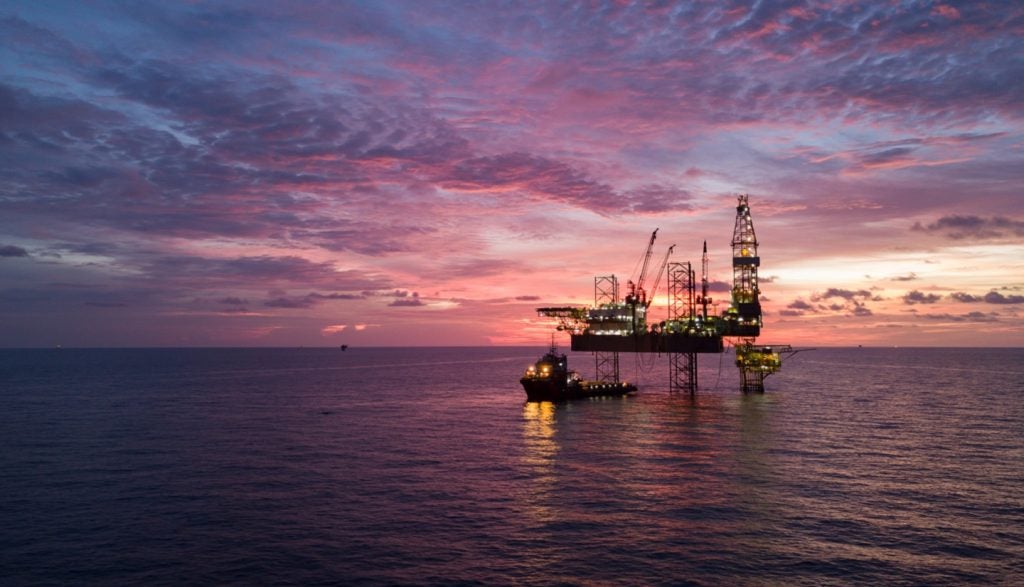

In recent years, the Arctic has become a hub of oil exploration. Currently accounting for around 15% of world energy supply, its offshore resources are expected to prove increasingly vital in future, surging in importance as global production from developed fields declines.
This means the industry needs smart solutions in place for handling any potential spills. While detecting, containing and cleaning up spills is a complex endeavor at the best of times, the task becomes even more demanding in the harsh environs of the Arctic. As well as the remote location, response teams must deal with extremely low temperatures, seasonal darkness and the near-ubiquitous presence of ice.
The Arctic Oil Spill Response Technology Joint Industry Programme (JIP) was formed to address just these challenges. Created in January 2012, the programme has brought together major players to build on existing technologies in the field.
"We got together, looked at the research that has been conducted to date, looked at the areas that potential drilling would be moving into and determined there were some areas in oil spill response that could benefit from improvement," says Joe Mullin, the programme manager, who co-ordinates its constituent projects and technical working groups.
See Also:
Aims and expertise
Its goals aren’t entirely novel: research has been underway for more than five decades into Arctic oil spill response, and the major operational stumbling blocks are well-known. This programme, however, will take industry knowledge to the next level. It aims both to advance spill response strategies and deepen our understanding of the impacts on the Arctic marine environment.
How well do you really know your competitors?
Access the most comprehensive Company Profiles on the market, powered by GlobalData. Save hours of research. Gain competitive edge.

Thank you!
Your download email will arrive shortly
Not ready to buy yet? Download a free sample
We are confident about the unique quality of our Company Profiles. However, we want you to make the most beneficial decision for your business, so we offer a free sample that you can download by submitting the below form
By GlobalDataWe round up the most innovative oil spill recovery technologies.
Rather than confining themselves to a single technique, researchers are looking to develop all the tools in their tool box. As such, the programme features six technical working groups: mechanical recovery, dispersants, in-situ burning, trajectory modelling, remote sensing and environmental effects.
Each group draws on a vast pool of expertise. Ten companies are represented: BP, Chevron, ConocoPhillips, Eni, ExxonMobil, North Caspian Oil Company, Shell, Statoil, Total, and most recently the Russian oil giant Gazprom Neft. Because oil spill response is not a competitive aspect of the industry, all parties stand to gain by working together to develop new methodologies.
"I can reach down into the remote sensing experts not of one company but 10, and that allows us to be more effective and come up with better solutions," says Mullin. "All these companies want the information we develop to be shared, both with other organisations and the public. So by co-operating you can leverage your resources and personnel and accomplish a lot more."
Gazprom Neft, which joined in April 2014, is a particularly welcome addition to the collective. "Really this is the best time for the JIP to see new members because we are due to start the operational research," continues Mullin. "As we enter this stage, they’re going to help us in two ways: technical expertise and increased funding to increase the scope of our work projects."
Transitional times
Currently, the programme is in transition. It completed its first phase earlier this year, which was designed to ascertain the current state of the art and work out how best to allocate its resources. Since the programme was initialised, advances have been made in many areas, allowing researchers to home in on what needs doing next.
To date, nine reports have been completed, each delving into a particular methodology. In-situ burning is just one example. Capable of eliminating more than 90% of oil, this well-established technique is believed to offer the highest potential for oil spill removal in the Arctic. The JIP has released a 300-page report summarising its role, function and benefits, alongside its environmental impacts.
"The research demonstrates that the technology exists to safely conduct controlled in situ burning in a wide variety of conditions," says Mullin. "A good example of that was that during the Deepwater Horizon incident, when more than 18 million gallons of oil were removed from the water surface safely without an injury."
Taken together, these reports build up a comprehensive picture of the technologies available, and suggest possible avenues for further development. As the programme moves into Phase II, research projects are planned within each of its primary areas of focus.
Stepping up a gear
In the area of dispersants, it is going to start effectiveness testing in three laboratories – one in Canada, one in France, and one in Norway. With the trajectory modelling, it will be looking into better ways of modelling ice movement, as well as incorporating superior ice algorithms into existing models.
In the area of in-situ burning, it has just initiated a research programme which explores the effects and potential operational uses of chemical herders. And in the field of remote sensing, it is going to mount different sensors both above and below an ice sheet at a range of depths.
Encouragingly, difficult conditions are viewed not as an impediment but an opportunity. As Mullin points out: "The presence of ice can limit the spreading of the oil and cold temperature can reduce weathering, allowing dispersants and in-situ burning to take place."
The programme’s environmental studies look set to prove particularly enlightening. Researchers will freeze 19 mesocosms and moor them in Norwegian water, periodically taking a core from each. Once back in the lab, they will grow the organisms that live in the oil-ice interface, keeping some as controls and exposing others to a range of oil response technologies. The aim is to see how different techniques affect the organisms at various stages of their life cycles.
As we move into the latter half of 2014, research is in full swing, and the final results should be announced towards the end of 2015. With new projects underway – and a new member boosting its expertise further – the JIP looks better placed than ever to step into uncharted territory.
As Mullin puts it: "A lot of times you can do things the same old way but we wanted to try some cutting edge new technologies and really push the envelope on oil spill research."


.gif)


